
Analysis, Reports, and Projections for Transit, Freight, and Cargo.
Transit Labs measures outcomes and projects future needs through a multifaceted approach using SaaS.
Project Requirements: Designed corporate identity/branding, styleguide, messaging, taglines, visual imagery, and culture. Created initial concept models, heuristic reviews, sitemaps, process flows, sketches, wireframes, prototypes, and detailed specifications.
Our team incorporated the two elements of transit and data in our branding. Our approach includes a logotype and icon with compliment colors of blue and marigold.





We needed to present ourselves and the product to the public through some simple front-facing pages.
Collaborative copywriting throughout the company allowed our design team to quickly showcase our content within high-fidelity mockups. Here are few of the results from this session. I like to expedite this process and circle back with our team while iterating within the front-end code.

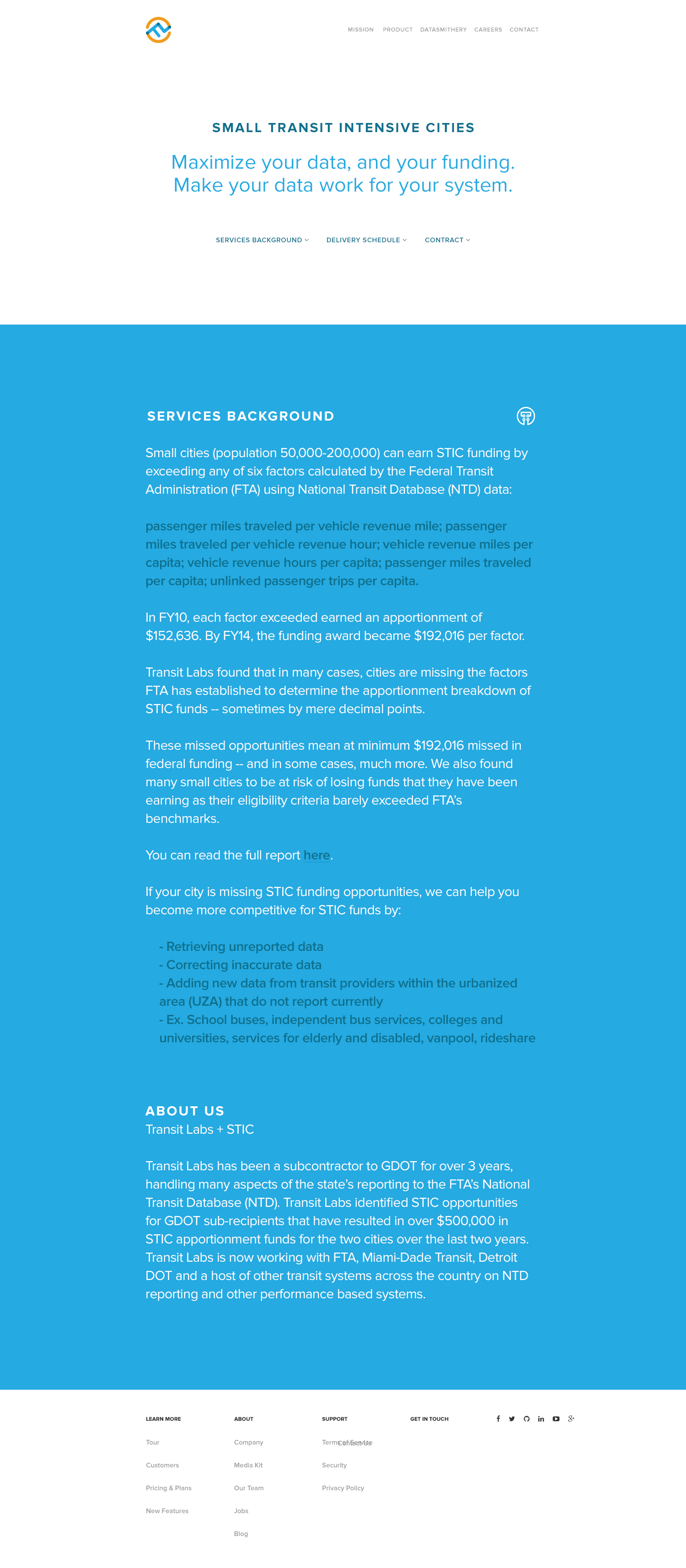
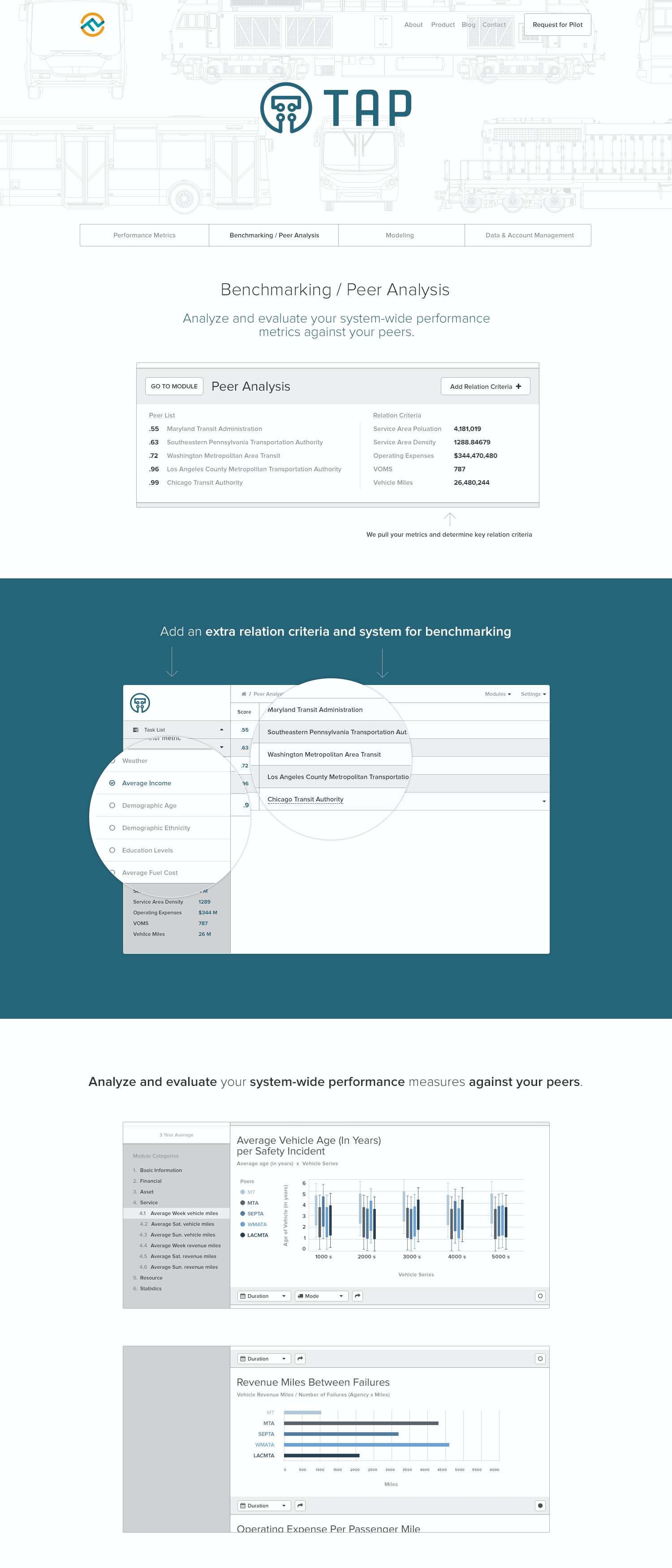

TAP (Transportation Application Platform) is our product built for Transit, Freight, and Cargo.
After Congress mandated data reporting in 1974, the FTA established the National Transit Database (NTD) to house information on the financial, operational, and asset status of American transit systems. TAP interfaces with the National Transit Database (NTD) and various datasets that are separated into modules.
Here is how we approach the structure of the product.
The dashboard is separated into modules to access data efficiently.
Each module is carefully crafted to serve up specific datasets that allow the user to view and edit around their transit authority. The modules that are visible to the user are set by the administrator using privileges.

TAP is accessible by many organizations and each one requires administrator and user privileges.
Managing the accounts begin with Transit Labs activating a transit authority and assigning an administrator. The admin can then invite, activate, and assign privileges to the users. We can also involve the Federal Transit Administration (FTA) and private organizations.




Our intial iterations of accounts with user managment used a grid format to display each user. We needed to scrap this approach as we found that a standard list allowed us to span the width under the user to adjust their settings, seen after this section.
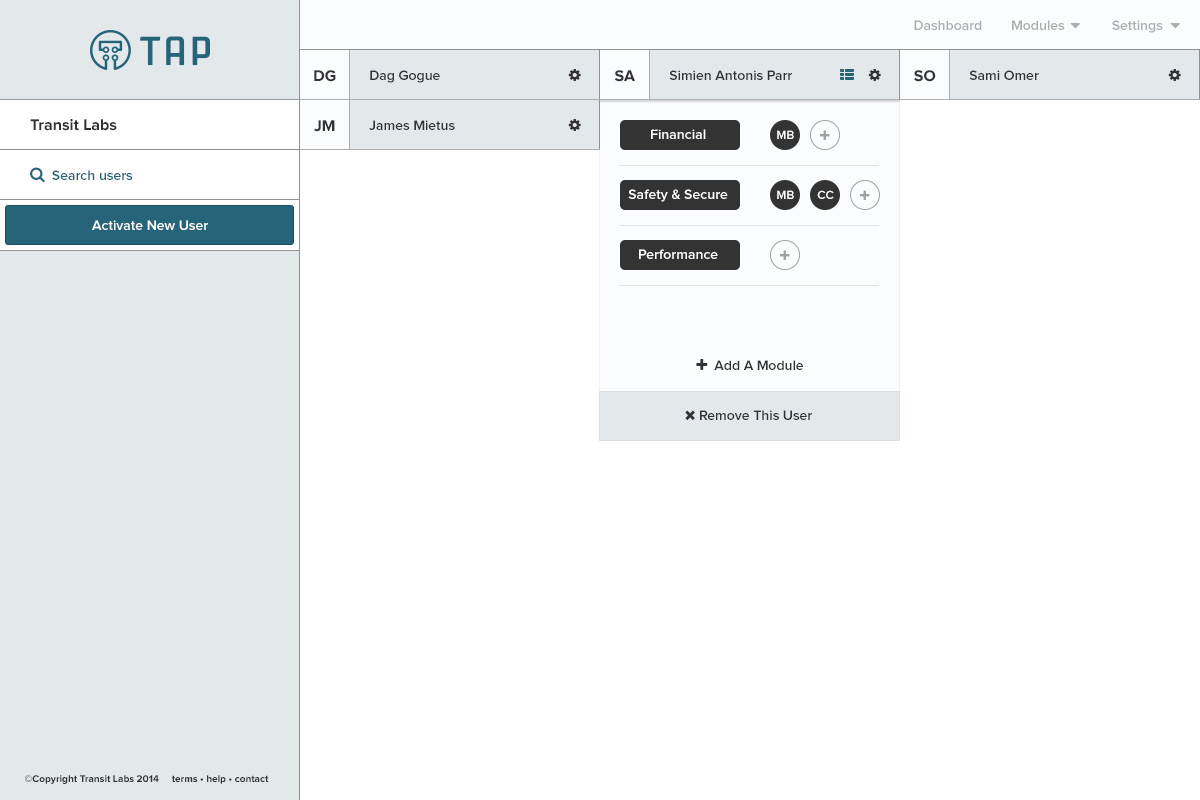

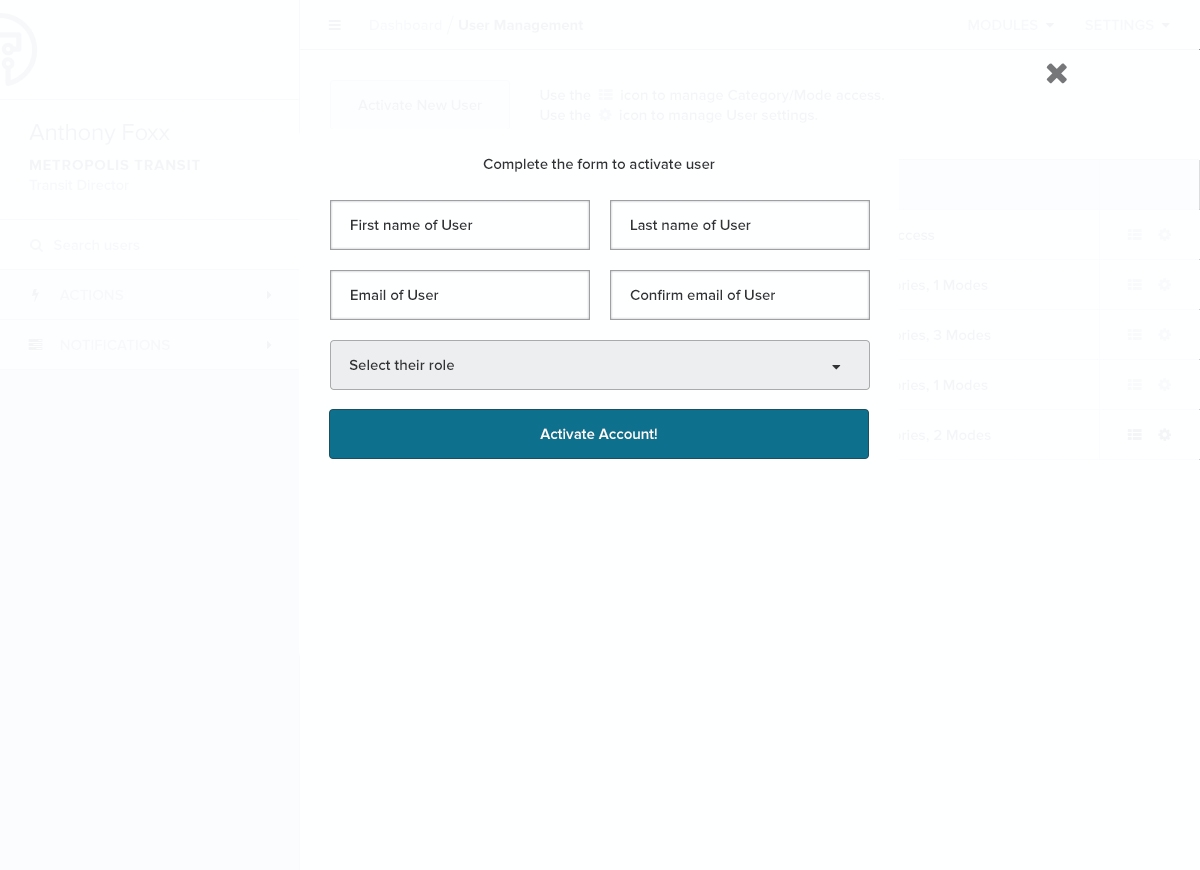


The NTD was created to standardize the data submitted to receive federal funding.
We begin our approach with the National Transit Database (NTD) which contains detailed information on transit organizations, vehicle fleets, revenues and subsidies, operation and maintenance costs, vehicle fleet dependability and inventory, services used and delivered, as well as safety and security. Transit Labs has improved the reporting process and introduced additional modules that create a complete transit agency software suite.
One problem is that many agencies have their own process to store the data before it is submitted and then validated by the government. It is crucial that the data is validated in time to receive federal funding, but without a convention for processing and storing the data it becomes costly and time-consuming for the agency. The data becomes disparate and validation requires outside consulting firms to validate the data, but not necessarily position the agency to perform the work themselves.
Our team got together for whiteboard sessions regulary. This helps us achieve a unified approach on how the data is efficiently distributed between departments. Here in this session we are listing the essential tools for analyzing, reporting, and submitting validated data to the National Transit Database.
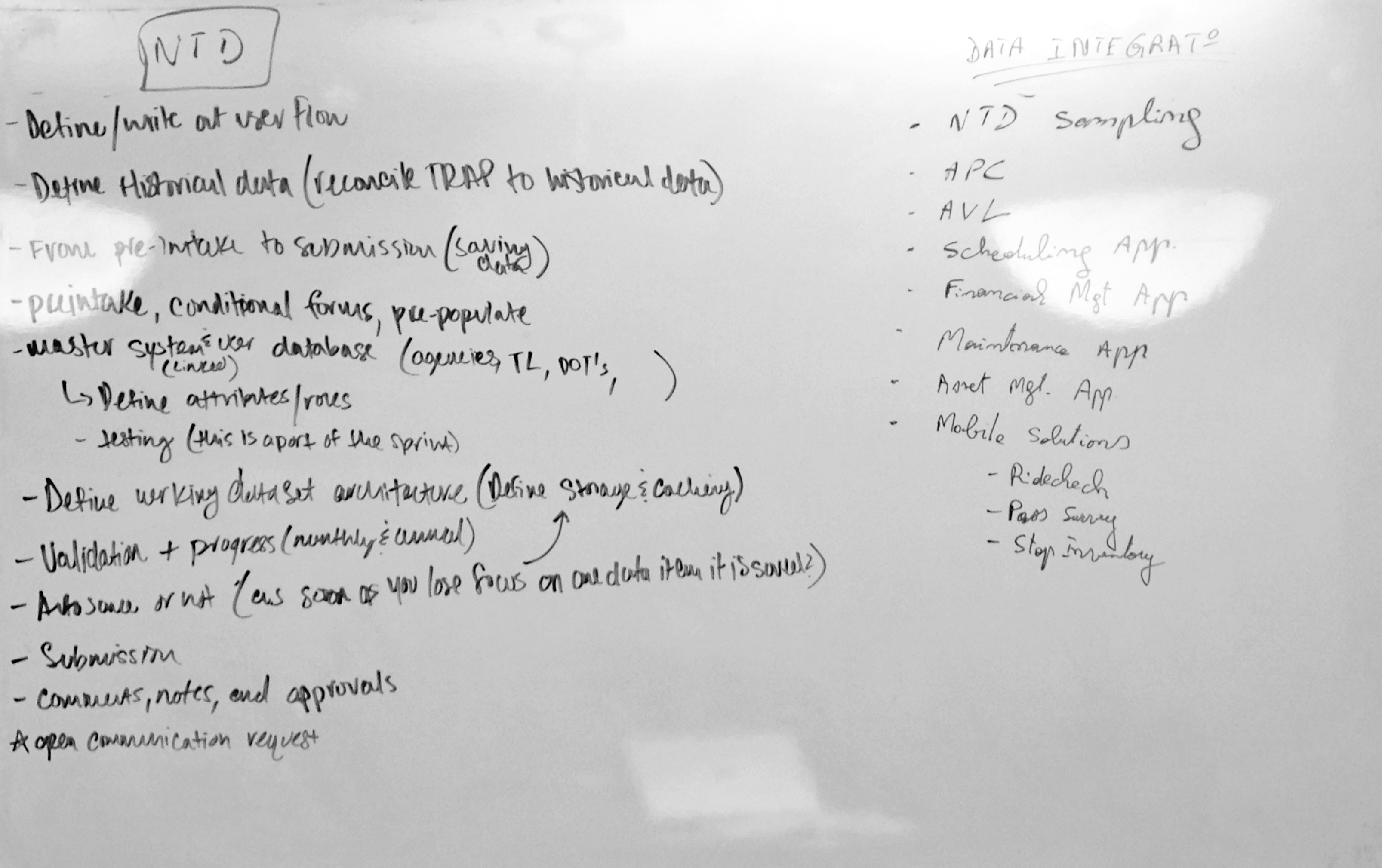
In order to get federal funding a transit authority must report their data to the NTD.
We discovered that submitting data would mitigate validation errors while entering data on a daily, weekly, and monthly basis. As the data is submitted it is validated in real-time, allowing the agency to prepare the annual submission without delays or additional resources. The validation issues will dynamically propagate methods for resolving the issue while utilizing the built-in internal and external communications for assistance.
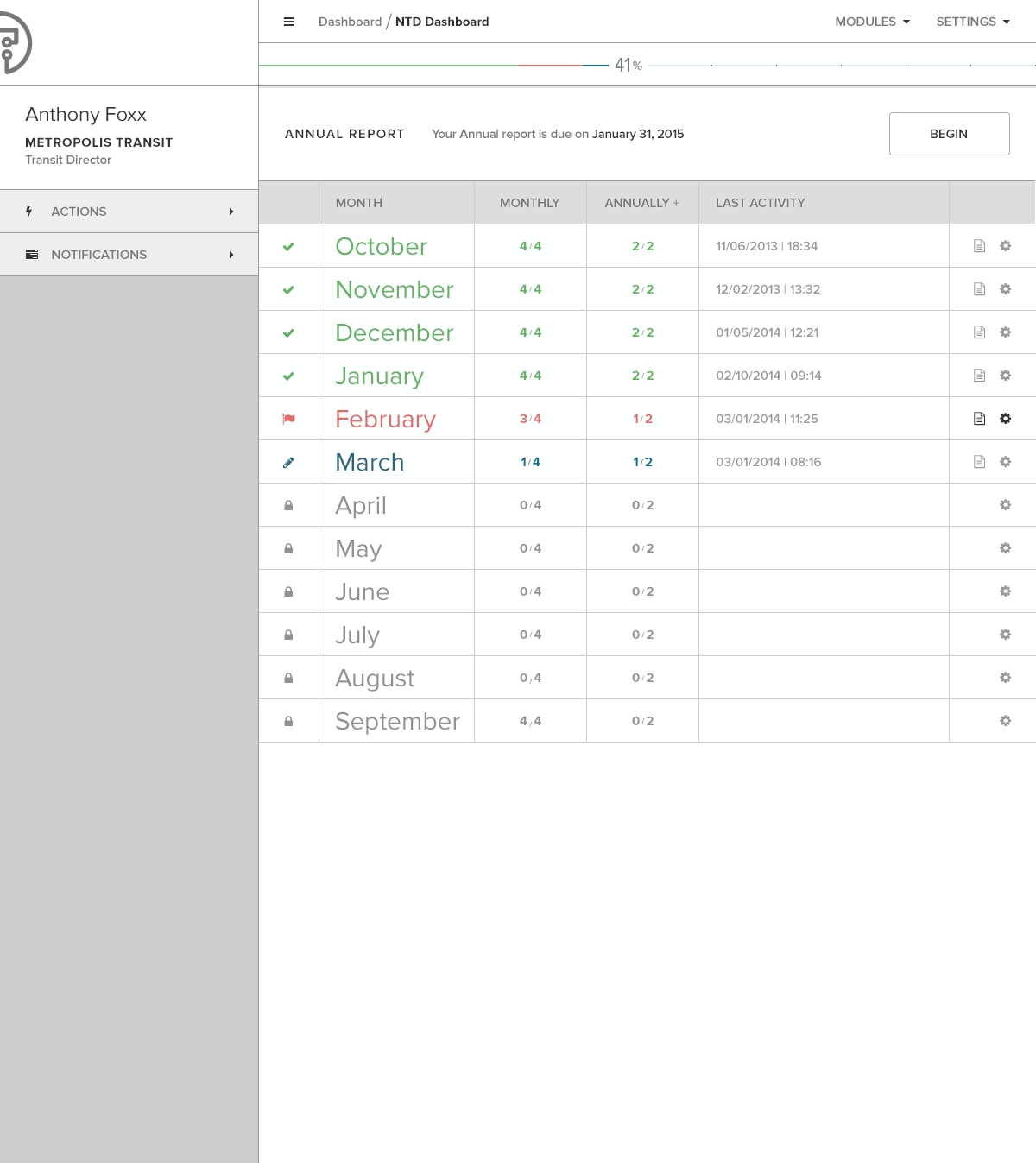



Without validation of the data, a transit authority will not receive their federal funding.
NTD reporters are required to respond to validation questions in a timely manner. FTA assigns an NTD validation analyst to each reporting transit provider to assist with NTD reporting throughout the year. Failure to respond to validation questions in a timely manner with either revisions or satisfactory documentation will result in a Failure to Report. If you receive a Failure to Report, your data will not be included in the apportionment of Urbanized Area Formula Program grants, and FTA is prohibited by law from awarding you any further grants under §5307 or §5311. So, it's very important that we allow full communication between all organizations to facilitate a quick validation.
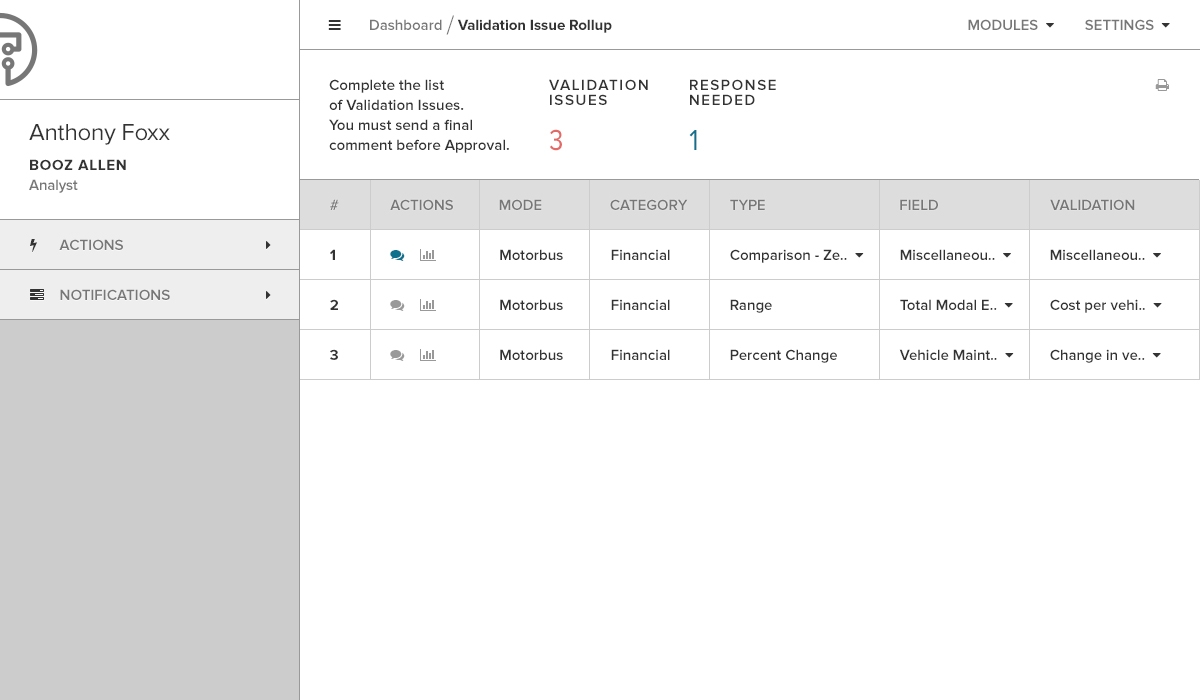

When you have a large set of assets and team, it's imperative to create a styleguide.
This was our first iteration of the styleguide which included every asset and the functionality for TAP. This gave any new team members a quick overview of how we put together our product and for any developer that required clarification on a certain element.
